Modern Polish anti-aircraft artillery
Poland is one of the few NATO countries whose armed forces have a significant number of artillery and artillery-rocket anti-aircraft installations. Moreover, the command of the Polish Army not only does not plan to abandon anti-aircraft artillery, but also initiates further modernization programs, issuing orders for the creation of modern all-day optoelectronic sights and highly automated fire control systems.
Towed anti-aircraft guns
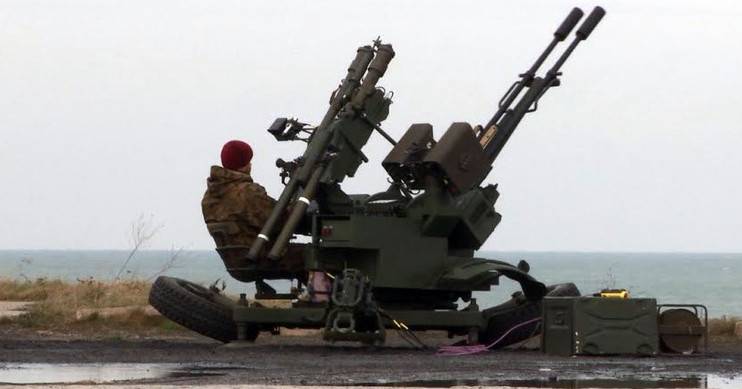
A number of sources say that 57-mm S-60 automatic anti-aircraft guns may still be in storage in Poland. However, if they are still available in warehouses, they are of little use. Taking into account the fact that hopelessly outdated morally and physically SON-57 gun-guided radar stations were used to control the fire of 9-mm machine guns in the Polish Army, it will be possible to use S-60 guns only for conducting ineffective barrage anti-aircraft fire.
Of much greater value are the ZU-23 23-mm twin anti-aircraft guns, the licensed production of which in Poland began in 1972 at a plant in the city of Tarnow. According to expert estimates, at present, there may be more than 300 such installations in the combat units of the Polish Army and in warehouses.
Polish 23-mm anti-aircraft guns have been repeatedly upgraded, there are several variants in service, differing mainly in sights and the presence or absence of missile launchers.
In 2002, ZUR-23-2KG Jodek-G artillery-rocket launchers equipped with a combined (day / night) passive optoelectronic sight Prexer CKE-2 and two transport and launch containers with Grom anti-aircraft missiles (Polish version of the Igla MANPADS ").
Thanks to the introduction of anti-aircraft missiles into the installation, the firing range against air targets exceeded 5 m and it became possible to destroy air targets flying at speeds up to 000 m/s. According to Polish experts, the effectiveness of the ZUR-500-23KG Jodek-G has increased by more than 2 times compared to the original ZU-23 and it has become possible to fire accurately at night.
In 2007, an installation with an improved all-day sight combined with a laser rangefinder was tested, and sub-caliber armor-piercing incendiary and armor-piercing incendiary tracer shells with an increased muzzle velocity appeared in the ammunition load, due to which the effective firing range increased by about 20%. In 2015, the search and aiming thermal imager CKE-1T was introduced into the installation.
In 2016, the Polish Ministry of Defense ordered six artillery and rocket batteries with the Pilica fire control system (PSR-A) to protect air bases from low-altitude air attack weapons.
The creation and production of the Pilica system is carried out by the PGZ-PILICA consortium, which includes the companies: PIT-Radwar and Zakłady Mechaniczne Tarnow. Currently, the 37th missile and 35th air defense squadrons of the Polish Air Force are armed with Pilica anti-aircraft systems. Each squadron has three anti-aircraft batteries.
The battery includes a mobile control center equipped with a computerized fire control system, six ZUR-23-2SP Jodek combined artillery-rocket mounts with Piorun (Grom-M) missiles, two transport vehicles and two vehicles for transporting ammunition. Target designation comes from a mobile three-coordinate radar station IAI ELM-2106NG. Also, the anti-aircraft battery is attached to several security vehicles.
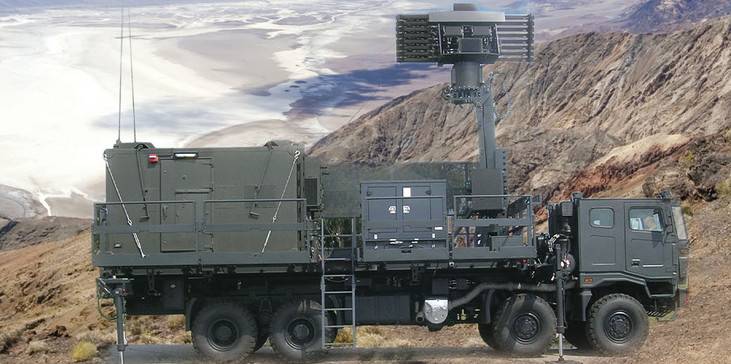
The IAI ELM-2106NG radar can be mounted on various chassis or towed vans. The station operates in the frequency range of 1,5-2 GHz and detects a fighter-type target at a distance of up to 60 km. It is possible to simultaneously track 60 targets and broadcast data to a common network for exchange with other anti-aircraft systems.
The Pilica anti-aircraft artillery and missile launcher is equipped with a GOS-1 combined surveillance and sighting system with a television camera, a thermal imager and a laser rangefinder. The electric drive provides centralized pickup according to the ACS commands. For autonomous power supply there is a gasoline generator. Information from sighting systems is transmitted to the command post.
The specific characteristics of the optoelectronic sighting systems used on the ZUR-23-2SP Jodek installations are not disclosed. But the brochures say that the calculation is capable of independently searching for targets day and night, measuring the distance and, after entering the affected area, firing at the target.
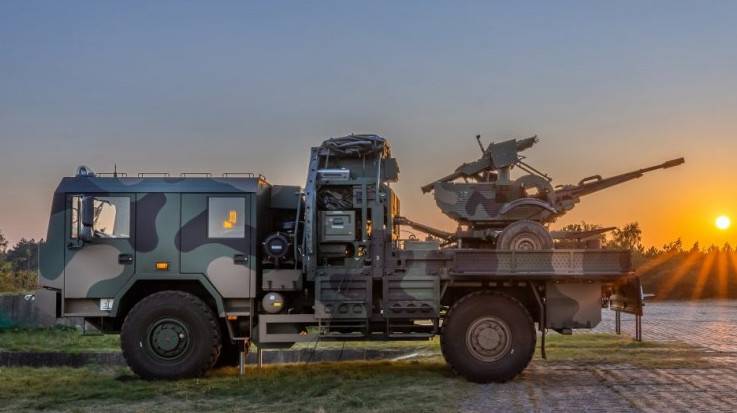
Jelcz 442.32 trucks with a fast loading and unloading device are used for the transportation of anti-aircraft installations and calculation. If necessary, fire can be fired from the body.
Self-propelled anti-aircraft guns
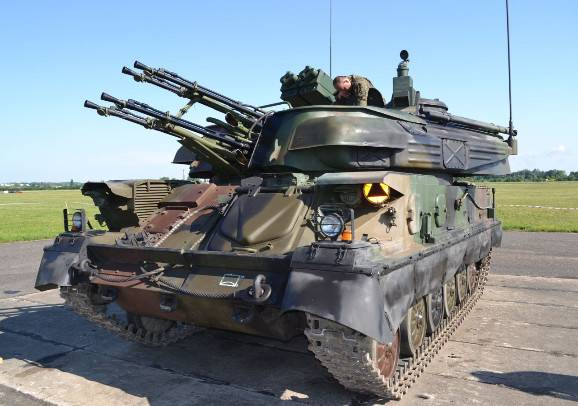
Since the second half of the 1980s, the Polish army has been using the Hibneryt family of ZSUs. The very concept of a wheeled self-propelled gun, with a rapid-fire anti-aircraft gun located in the back of a truck, is not new. The Soviet and Russian armies actively used such vehicles during the fighting in Afghanistan and Chechnya. But in our country these were improvisations created in military workshops, and in Poland such machines were specially designed. In addition to countering an air enemy, they are considered as a means of combating lightly armored vehicles and manpower.
In 2005, four Hibneryt vehicles were delivered to Iraq, where they were used as convoy escorts, and performed well. To protect the calculations from bullets and shrapnel, armored shields were installed on the guns.
If the first Polish Hibneryt ZSU did not have armor protection, then the Hibneryt-P vehicle on the Star 266M chassis, produced in 2007 by a military equipment repair company located in Nowy Dwur Mazowiecki, had armor that protected the crew from light fragments and rifle bullets fired from a distance of 300 m.
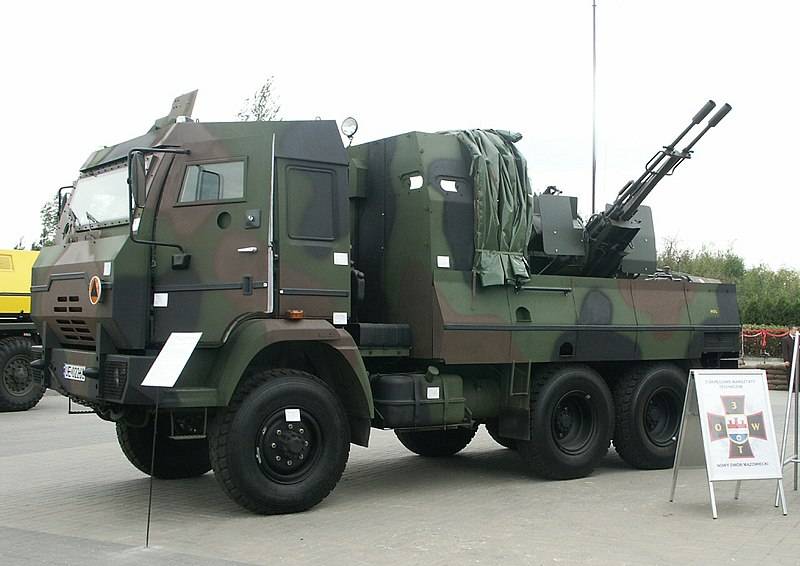
In 2010, the Hibneryt-3 ZSU was created with a higher level of ballistic and mine protection and increased firing angles. The mass of the vehicle in combat position is 11 kg. Maximum speed - up to 300 km / h. Crew - 80 people.
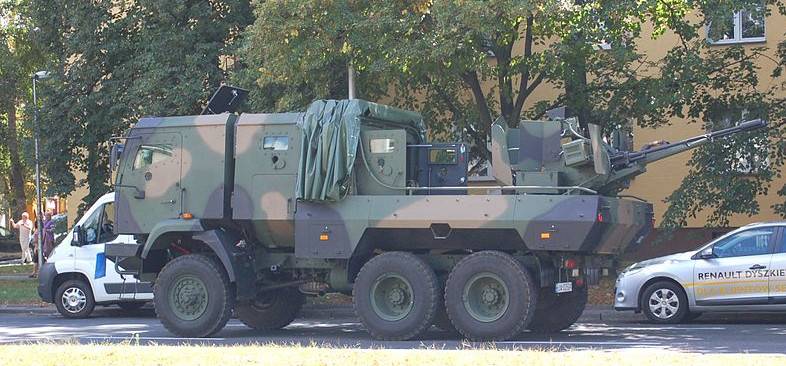
Floor compartments hold eight ammo boxes and four spare barrels. The machine is equipped with communication facilities that allow receiving target designation from external sources.
By the second half of the 1980s, the ZSU-23-4 Shilka self-propelled anti-aircraft gun largely ceased to meet modern requirements. First of all, this concerned the RLC-2 radar complex and the analog ballistic computer. By that time, the potential enemy had equipped most of his combat aircraft with radar receivers and devices that accurately determined the coordinates of an anti-aircraft self-propelled gun with an aiming and search radar turned on. Suspended and built-in active jamming stations reliably suppressed the relatively low-power Shilki radar, which had a limited number of lettered frequencies.
The problem was aggravated by the fact that, despite a number of “small” upgrades, on all ZSU-23-4s available in the ATS countries, the electronic components were mostly built on a frankly outdated element base, with a high proportion of electrovacuum devices.
In the course of a possible reflection of raids, combat aviation NATO and in the case of active enemy electronic countermeasures, the Shilka's effectiveness against modern fighter-bombers and attack aircraft could not be so high. In order not to lose the factor of surprise and to exclude unmasking by an ineffective radar, the calculations of self-propelled anti-aircraft guns were forced to use optical sights for the most part.
The command of the Polish Army understood all this very well, but the collapse of the ATS and economic difficulties delayed the modernization of the Polish Shilok, scheduled for the early 1990s, by more than 10 years.
In 2000, at the request of the Department of Supply of the Armed Forces of the Ministry of National Defense, the Scientific Research Center for Military Mechanical Equipment in Tarnow began developing a project for the modernization of some of the least worn out ZSU-23-4 Shilka. The modernization of self-propelled anti-aircraft guns was planned to be combined with a major overhaul, which was supposed to extend the service life by about another 20 years.
The requirements for modernization were repeatedly revised, at some stage they wanted to abandon it and replace the Shilki produced in the USSR with a 35-mm anti-aircraft self-propelled gun of their own production. But in the end, it was decided to return to the modernization of the ZSU-23-4, and in December 2005, the Chief of the General Staff of the Polish Armed Forces signed the corresponding order.
Practical work at the plant in Tarnow and tank repair workshops in Zhuravitsa began only in 2010. The upgraded vehicle is known as the ZSU-23-4MP Biala. The Polish version of "Shilka" got its name from the river Biala (Polish - "White"). At the first stage, the contract provided for the modernization of three Shiloks in 2010, four in 2011 and two in 2012.
According to information published in open sources, the first batch of nine modernized installations entered the 10th armored brigade. Currently, the troops have 28 ZSU-23-4MP Biala.
Polish media wrote that more than 50 machines could be upgraded in total. But it is not known whether there are so many installations whose main units do not have critical wear.
After modernization, the capabilities of Polish anti-aircraft self-propelled guns have increased significantly. Instead of the outdated RLK-2 radar complex, passive optoelectronic equipment with a thermal imaging channel is used to search for air targets. The digital fire control system, combined with a laser rangefinder, allows firing targets in a semi-automatic mode.
The rejection of the airborne radar somewhat reduced the ability to combat air targets in conditions of heavy smoke and fog, but the stealth and survivability of the installation as a whole increased. Thanks to the automation of the process of searching for an air target and the use of weapons, the ZSU crew has been reduced to three people. The commander and driver have modern night vision devices at their disposal.
Four Grom missiles were introduced into the armament, which can hit low-altitude targets at ranges up to 5 m. New equipment and partial replacement of ammunition (new sub-caliber shells added) made it possible to increase the effective firing range of cannons to 500 km.
The actions of the anti-aircraft battery are controlled by the Łowcza-3 mobile automated control system on the SPG-2A tracked chassis (Polish version of the MT-LB). The creation of such a machine began in the late 1980s, but it was put into service only in 1999. The Łowcza-3 automated control system uses Thomson-CSF data transmission systems and data processing equipment developed by the Radwar Professional Electronics Research and Production Center.
In the second half of the 1990s, the leadership of the Polish military department, as part of the concept of transition to NATO standards, planned to abandon the Soviet ZSU-23-4 Shilka. To replace them, it was planned to create a self-propelled artillery mount armed with 35-mm Oerlikon-Contraves anti-aircraft guns (chambered for 35x228 mm) with programmable remote detonation of shells. Radwar became the main developer of the new ZSU.
In the autumn of 2000, tests began on the PZA Loara self-propelled anti-aircraft gun (Polish: Przeciwlotniczy Zestaw Artyleryjski "Loara" - self-propelled anti-aircraft gun "Luara"). This ZSU was intended to combat low-flying air targets: airplanes, helicopters, UAVs, cruise missiles. In addition, even at the design stage, it was envisaged that it would be able to hit lightly armored vehicles and side armor of the main combat tanks, for which there are APFSDS-T sub-caliber armor-piercing tracer shells in the ammunition load.
ZSU "Luara" is armed with two 35-mm automatic guns Oerlikon GDF-005, located in a fully enclosed turret mounted on the chassis of the MBT PT-91 Twardy (Polish version of the T-72). Guidance in the horizontal and vertical planes is carried out by high-speed electric drives with high-precision electronic angle and position sensors. There are two crew members inside the turret: the commander and the gunner-operator. The target is monitored through LCD monitors. The weight of the turret together with ammunition, equipment and crew is 13 tons.
When adapting the chassis, the layout was changed, and the driver's workplace was shifted to the left. An additional auxiliary installation is located in the rear of the case and the capacity of the batteries is increased. The armor of the self-propelled unit is capable of withstanding 12,7 mm bullets and large fragments.
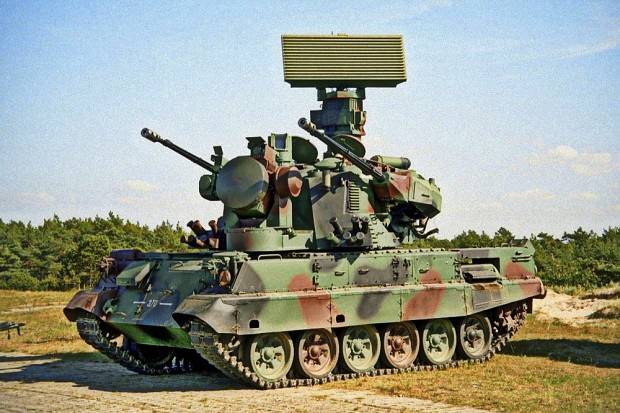
The vehicle, weighing 45 kg in combat position, has good mobility, which allows it to operate in the same battle formations with medium tanks. Diesel engine with a capacity of 300 liters. With. able to provide ZSU speed on the highway 1 km / h.
To search for air targets at a distance of up to 27 km, the AFAR radar operating in the centimeter frequency range was used. This station with a built-in friend or foe interrogator is capable of simultaneously tracking 64 targets. The radar antenna rotates at a speed of 60 rpm. The radar has low power consumption and high noise immunity.
The radar sight-rangefinder, the antenna of which is located in the frontal part of the tower, after taking the target for tracking, transmits data to the automatic fire control system, and after the target enters the affected area, the ACS calculates the lead, gives the command to open fire and programs the fuses of the air-blasted shells.
As duplicate sighting and search systems are provided: a laser range finder, a SAGEM thermal imaging camera and a television KTVD. Passive detection systems not only duplicate radars, but also, if necessary, improve the secrecy of use and protect the Loire from anti-radar missiles.
The sighting and search complex is capable of detecting targets while the vehicle is moving. The fire control system can operate in several modes - automatic, semi-automatic and manual, where the crew has full fire control. From the moment of detection, identification to the destruction of the target, no more than 10 seconds pass.
Two 35 mm Oerlikon GDF-005 cannons with a total rate of fire of 1 rds/min are capable of hitting air targets flying at speeds up to 100 m/s at a distance of up to 4 m. The advantages of 000-mm guns are the increased firing range compared to the Shilka and the greater power of the projectiles.
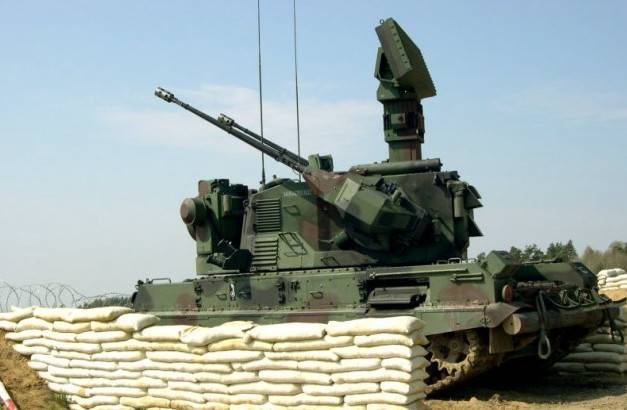
ZSU PZA Loara was shown to the general public for the first time at the MSPO-2004 exhibition, where it received positive reviews from experts. According to the declared characteristics, the Polish anti-aircraft gun surpasses the modernized German ZSU Gepard.
In 2012, the plans of the Polish military department was to order 10 batteries (60 units) PZA Loara. Each battery was to be given a NUR-22 radar and a Łowcza-3 mobile command post. However, due to financial constraints, these plans were not destined to come true. To reduce the cost of the project, the developer suggested using the Anders light armored tracked chassis or the Rydwan wheeled chassis, but this did not help.
In general, the Luara ZSU was made at a fairly high level and, in terms of its characteristics, was at least as good as other anti-aircraft self-propelled guns armed with 35-mm Oerlikon cannons: the West German Gepard, the Japanese Type 86 and the Chinese PGZ-2000. The main reason for the refusal was too high a price. One new PZA Loara costs about the same as four modernized ZSU-23-4MP Biala artillery and rocket launchers.
However, in the light of recent events, the leadership of the Polish Ministry of Defense decided to strengthen the potential of its own air defense system. There is a possibility that they will return to the Loire project, and the modified anti-aircraft self-propelled guns will still go into service.
The ending should ...

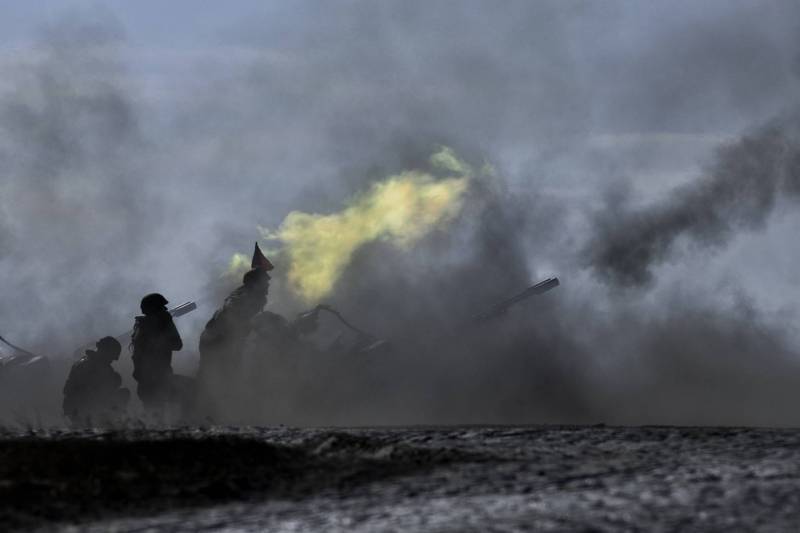
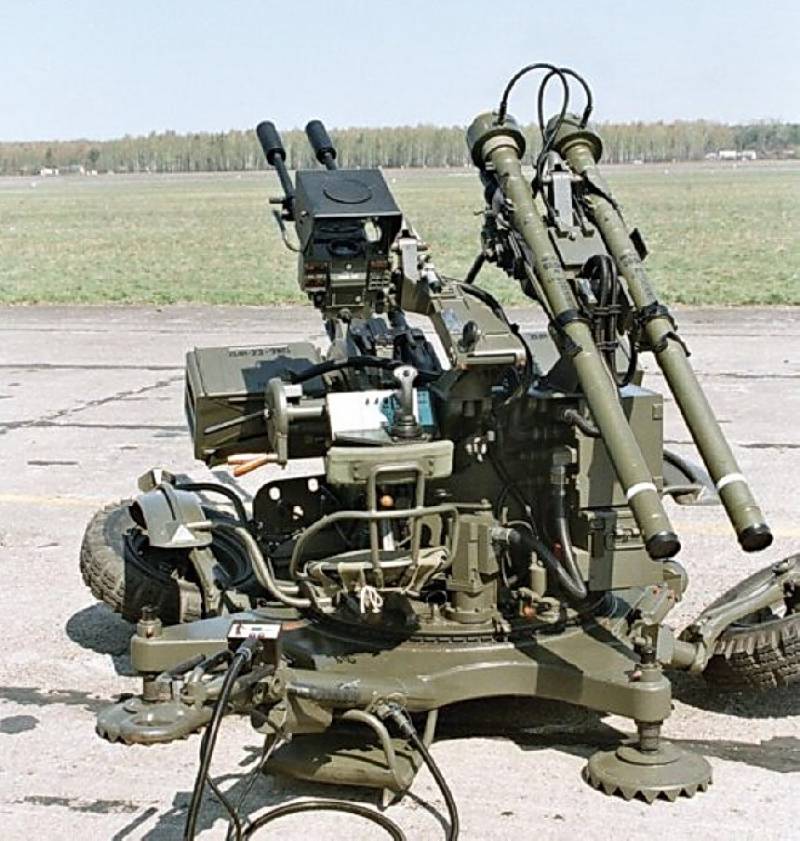
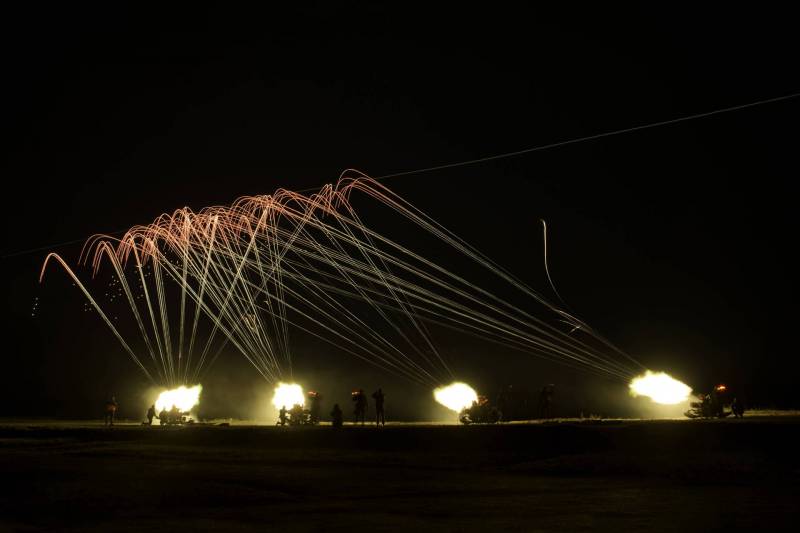
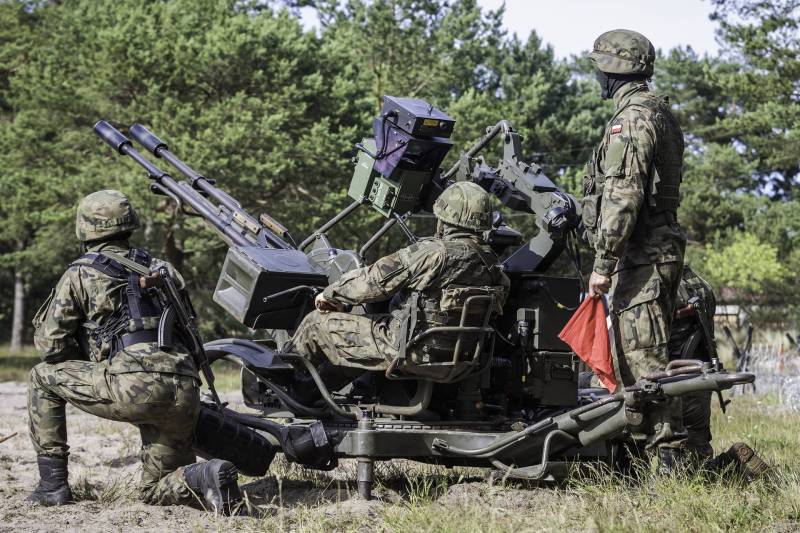
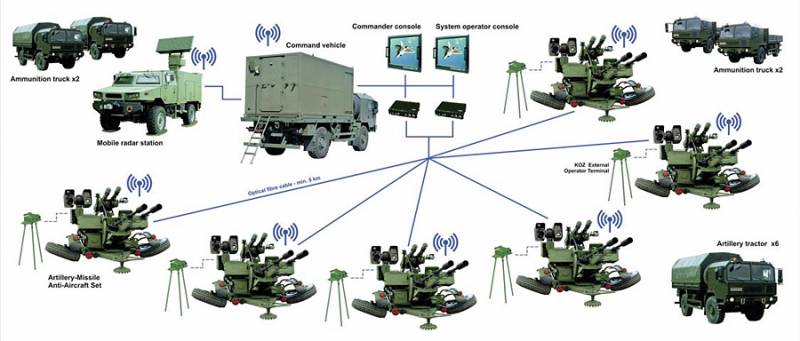
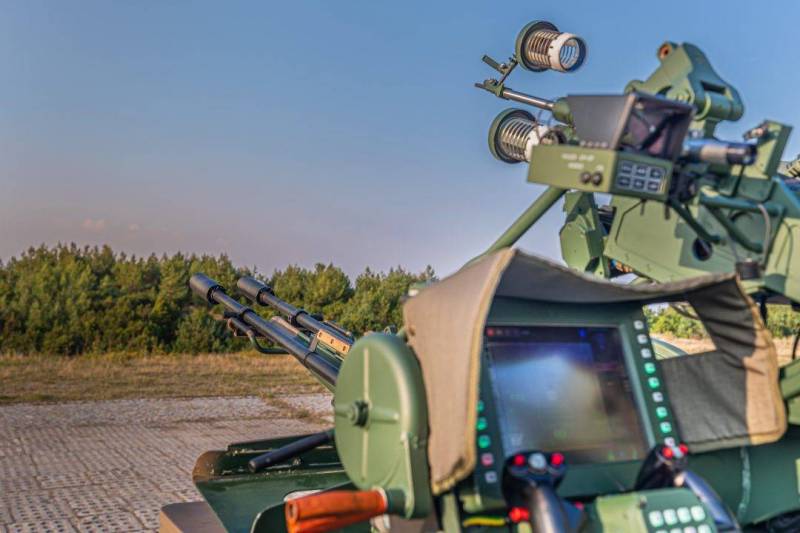
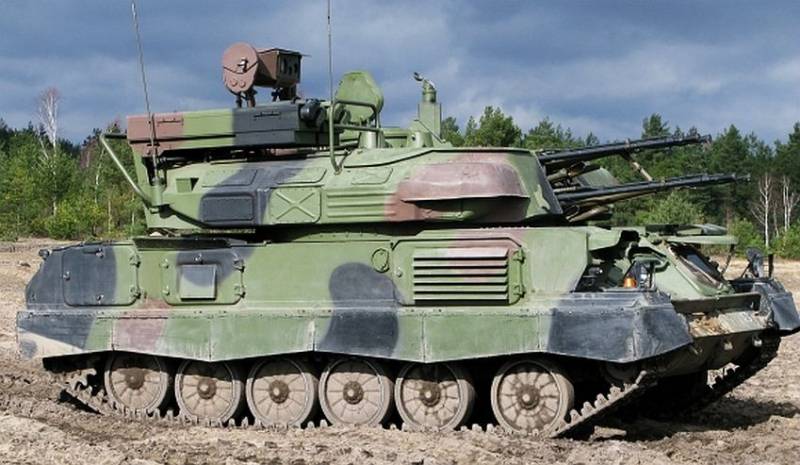
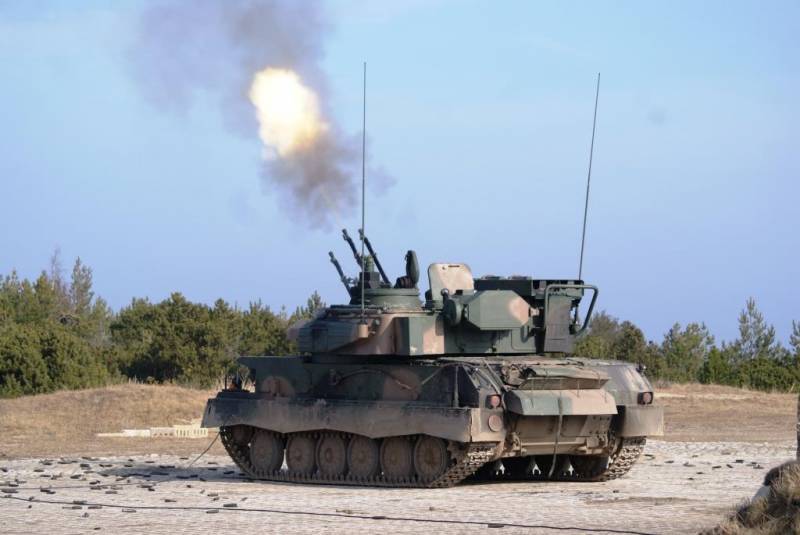

Information